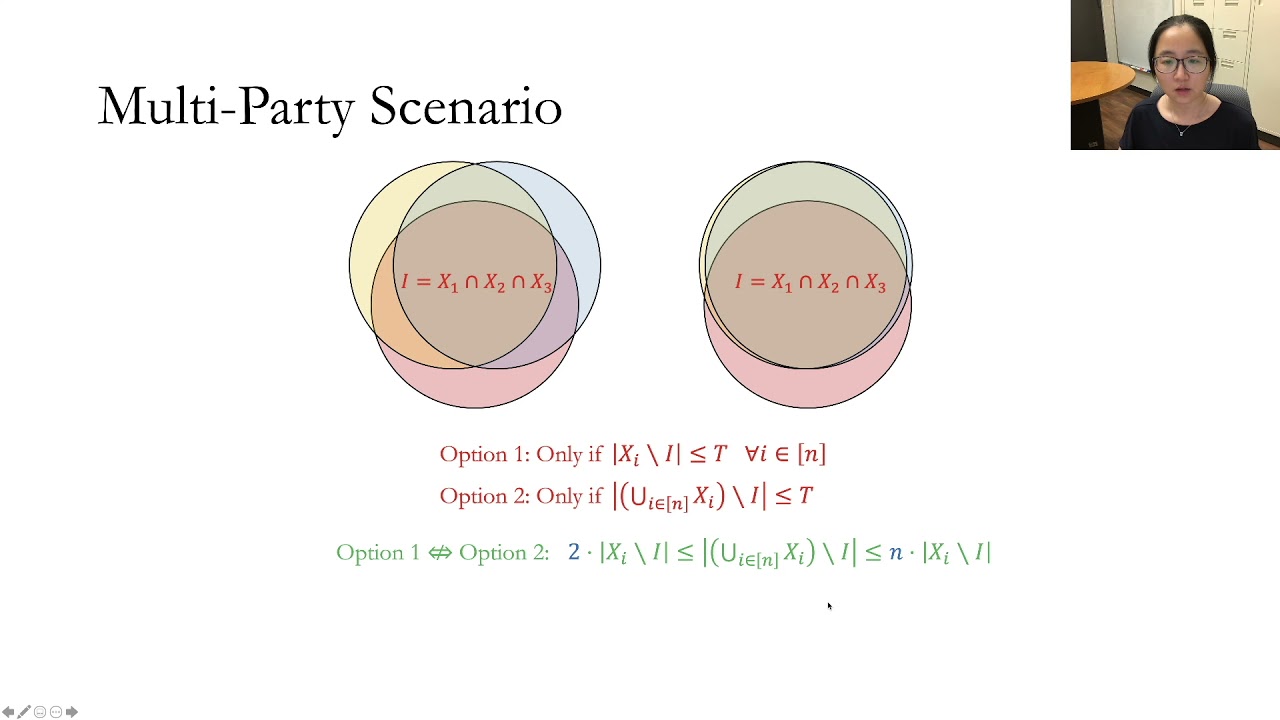Welcome to the resource topic for 2020/600
Title:
Multi-Party Threshold Private Set Intersection with Sublinear Communication
Authors: Saikrishna Badrinarayanan, Peihan Miao, Srinivasan Raghuraman, Peter Rindal
Abstract:In multi-party threshold private set intersection (PSI), n parties each with a private set wish to compute the intersection of their sets if the intersection is sufficiently large. Previously, Ghosh and Simkin (CRYPTO 2019) studied this problem for the two-party case and demonstrated interesting lower and upper bounds on the communication complexity. In this work, we investigate the communication complexity of the multi-party setting (n\geq 2). We consider two functionalities for multi-party threshold PSI. In the first, parties learn the intersection if each of their sets and the intersection differ by at most T. In the second functionality, parties learn the intersection if the union of all their sets and the intersection differ by at most T. For both functionalities, we show that any protocol must have communication complexity \Omega(nT). We build protocols with a matching upper bound of O(nT) communication complexity for both functionalities assuming threshold FHE. We also construct a computationally more efficient protocol for the second functionality with communication complexity \widetilde{O}(nT) under a weaker assumption of threshold additive homomorphic encryption. As a direct implication, we solve one of the open problems in the work of Ghosh and Simkin (CRYPTO 2019) by designing a two-party protocol with communication cost \widetilde{O}(T) from assumptions weaker than FHE. As a consequence of our results, we achieve the first ``regular’’ multi-party PSI protocol where the communication complexity only grows with the size of the set difference and does not depend on the size of the input sets.
ePrint: https://eprint.iacr.org/2020/600
Talk: https://www.youtube.com/watch?v=ybxunc1Q7Ls
See all topics related to this paper.
Feel free to post resources that are related to this paper below.
Example resources include: implementations, explanation materials, talks, slides, links to previous discussions on other websites.
For more information, see the rules for Resource Topics .
